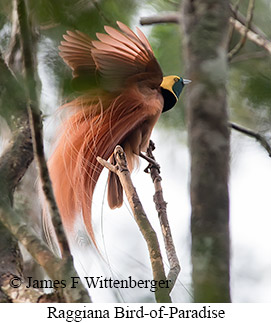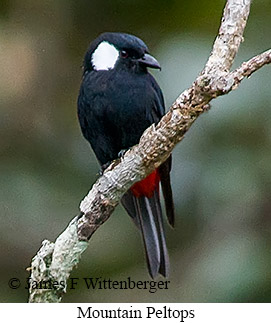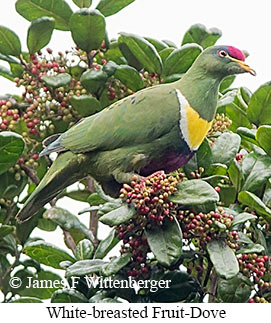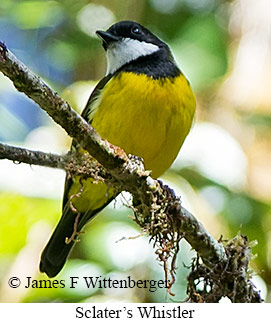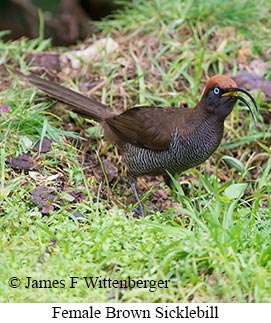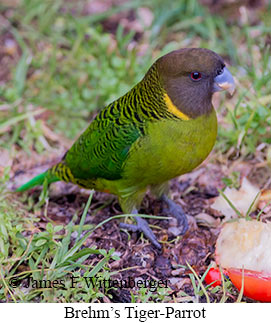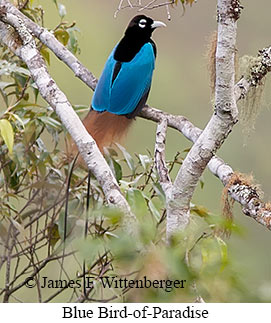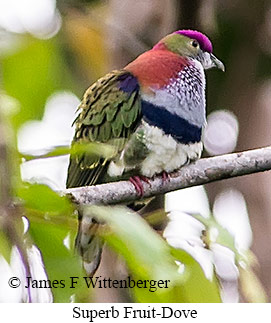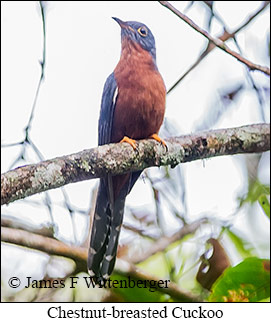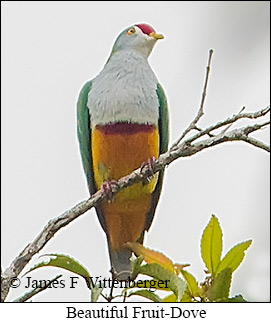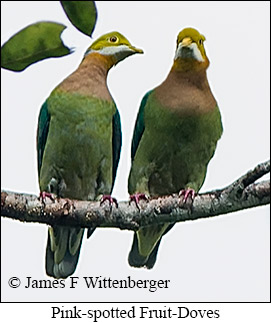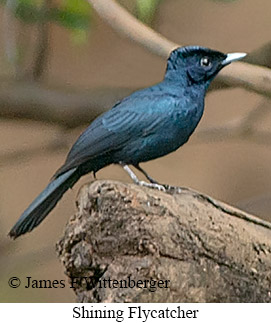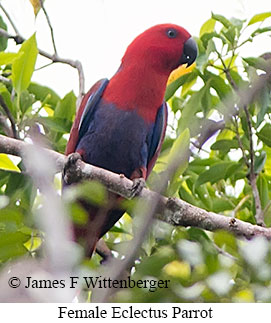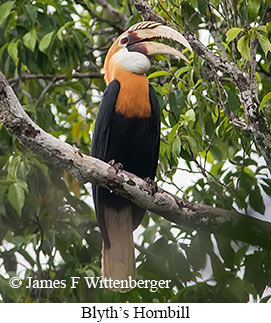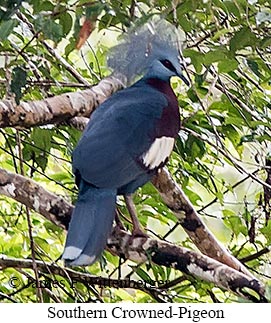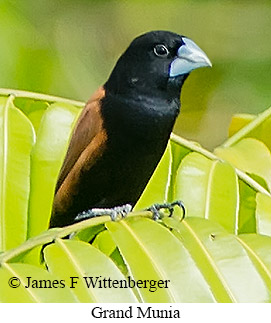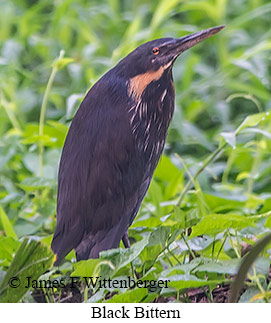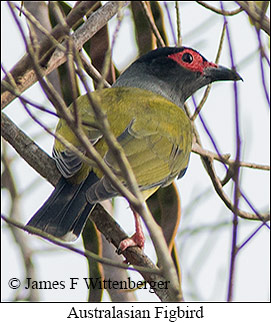NEW GUINEA BIRDING TRIP REPORT

TRIP REPORT
NEW GUINEA
| Start: | 07/04/2016 |
| End: | 07/25/2016 |
| Duration: | 22 days |
| #Species: | 331 |
| #Endemics: | 165 |
| #Heard Only: | 23 |
2016 Papua New Guinea Birding Tour
TOUR DESCRIPTION
I joined a tour to Papua New Guinea conducted by Rockjumper and led by Erik Forsyth during July 2016. Below is my experience during the tour.
July 3-4: My flight to Port Moresby was scheduled to depart the evening of July 3 and arrive at 5:00am July 4, the first day of the tour. Normally, I plan to arrive a day early, but there were no flights from Manila departing July 2 and the Rockjumper tour coordinator recommended that I not come in 2 days early due to the high crime rate in Port Moresby. She also said I wouldn't miss much if my flight was delayed. Unfortunately, my flight was canceled, the first cancelation of this flight since January. I emailed my wife who eventually reached the guide, Erik Forsyth, with some difficulty. Erik phoned me in Manila and said he would meet me at the airport next day with the group if my flight was on time or leave the local guide there to meet me if my flight was delayed. As a result of the flight cancelation, I missed the first day of birding to Brown River and Pacific Adventist University. As it turned out, we revisited both sites later in the tour.
July 5: I arrived on schedule shortly after 5:00am. By the time I cleared customs and retrieved my luggage it was nearly 6:00am. The local guide Leonard was in the arrivals area talking to the agent at the cell phone desk (the only desk in the quite small room) when I walked in from customs. A half minute later Erik walked in, and we joined the group.
From the airport it's nearly an hour's drive to Varirata National Park with no stops. Upon arrival at the park we immediately went to the Raggiana Bird-of-Paradise lek where about 7 males and 5 females were present. Photography was a bit challenging as the birds were in mid-story and higher of the trees, but it was possible during the couple hours we spent there. While at the lek we also saw White-crowned Koel, Chestnut-breasted Cuckoo, Dwarf Koel, White-throated Honeyeater, Barred Cuckooshrike, and White-bellied Whistler. After leaving the lek, we birded the road and overlook area, picking up New Guinea Friarbird (split from Helmeted Friarbird by some authorities but not yet Clements) and Torresian Crow. After lunch we birded a forest trail near the overlook. We had a distant but good scope view of Wompoo Fruit-Dove. We saw Zoe Imperial-Pigeon flying overhead,the most common way imperial pigeons are seen. We had good scope views of Yellow-billed Kingfisher on a fairly open mid-story perch but deep in the forest. We saw a number of parrots, mostly in flight, including Eclectus Parrot, Red-cheeked Parrot, Orange-breasted Fig-Parrot, and Purple-bellied Lory. We had decent views of Mimic Honeyeater and White-throated Honeyeater as well as scope views of a somewhat distant New Guinea Friarbird. We managed to ferret out a Pale-billed Scrubwren from thick understory for brief views. We also had brief views of Yellow-bellied Gerygone and Lemon-bellied Flycatcher. We had very good though distant views of Hooded Butcherbird near the overlook. We had good views of Black-faced Cuckooshrike and Boyer's Cuckooshrike. A few people saw Little Shrikethrush in thick understory before it disappeared. We had our only ticks of Chestnut-bellied Fantail and White-faced Robin for the tour. Some people had fleeting looks at Glossy-mantled Manucode and Growling Riflebird. Other notable birds included Black Berrypecker, Gray Whistler, Hooded Pitohui, Brown Oriole, Yellow-faced Myna, and Red-capped Flowerpecker. On the way back to Port Moresby we picked up Straw-necked Ibis and Blue-winged Kookaburra along the road.
July 6: We were up very early, arriving at the airport by 6:15am to catch our 9:30 flight to Tari. Unfortunately, our flight was delayed until nearly 2:00pm, so we didn't arrive in Tari until after 3:30pm. We then had about an hour and a half drive to Ambua Lodge. We stopped en route to bird some roadside forest once we reached the foothills where we picked up Black-throated Honeyeater, Belford's Melidectes, Spotted Berrypecker, Papuan Scrubwren, Crested Berrypecker, Brown-backed Whistler, Rufous-naped Whistler, and Friendly Fantail. After checking in at the lodge, we had time in late afternoon for a little birding at a fruiting tree behind the lodge. There we had prolonged views of a stunning male Stephanie's Astrapia, brief views of a King-of-Saxony Bird-of-Paradise and females of Carola's Paradigalla and Blue Bird-of-Paradise. A few people saw a single Short-tailed Paradigalla, which stayed in the tree only briefly. Other notable birds we saw there included Black-billed Cuckoo-Dove, Great Cuckoo-Dove, Yellow-billed Lorikeet, Loria's Satinbird, Tit Berrypecker, Yellow-browed Melidectes, Smoky Honeyeater, and Great Woodswallow. We then visited the parking area in front of the lodge where we had good views of Mountain Peltops.
July 7: In early morning we went back to the same fruiting tree behind the lodge. There we had decent views of a male Lawe's Parotia, Short-tailed Paradigalla, Stephanie's Astrapia, Superb Bird-of-Paradise, and Blue Bird-of-Paradise. Mostly, we saw the same species seen the previous evening. After an hour we drove up the main road toward Tari Gap where we walked a muddy trail off the main road that we dubbed the "Black Mud Trail". En route we saw a rarely seen Meyer's Goshawk. Our primary target bird along the trail was King-of-Saxony Bird-of-Paradise, which a few people saw briefly. We had frustratingly obscured views of a male Brown Sicklebill chasing a female through a wooded area. Some people had better views of it in flight. We had good scope views of White-breasted Fruit-Dove and Yellow-billed Lorikeet and saw several Papuan Mountain-Pigeons flying as is typical high overhead and very fast. A few people had brief views of a Papuan King-Parrot. Other birds seen included Red-collared Myzomela, Rufous-backed Honeyeater, Papuan Scrubwren, Fan-tailed Berrypecker, Spotted Berrypecker, Blue-capped Ilfrit, and White-winged Robin. We then drove up to Tari Gap to look for raptors with no success. We did see Papua Grassbird and a few repeats along the way. On the way back we picked up a flock of Hooded Munias feeding on the shoulder of the road and in roadside shrubbery.
July 8: We spent the morning back along the Tari Road and Black Mud Trail. We saw many of the same species seen the day before. We had much better looks at King-of-Saxony Bird-of-Paradise than the day before. A stunning male was first seen perched in a distant tree. It then flew to a much closer tree, where it perched briefly before flying back. New birds (at least for me) included Sacred Kingfisher, Mountain Kingfisher, Plum-faced Lorikeet, Papuan Lorikeet, Buff-faced Scrubwren, Black-faced Cuckooshrike, and Blue-faced Parrotfinch. In late morning we walked a forest trail leading away from the entrance area of the lodge. Notable birds included a noisy flock of Hooded Cuckooshrikes, good looks at Sclater's Whistler, Papuan Flycatcher, Black-throated Robin, Blue-gray Robin, and Island Leaf Warbler. After lunch we drove back up to the Tari Gap. We picked up Black-mantled Goshawk, Fan-tailed Cuckoo at a nest, and Rufous-throated Bronze-Cuckoo along the road. At the gap we found Papuan Marsh-Harrier perched on a very distant rock.
July 9: Before breakfast one of the participants saw a female Black Sicklebill in the fruiting tree outside her cabin at the lodge, the only one seen on the tour. We departed early for Mt Hagen, a long 8-hour drive from the lodge in Tari Valley. Interesting birds we saw en route included Pygmy Eagle, Brown Goshawk, and a fast moving Brown Falcon. We had a little time after arrival at Kumul Lodge outside the town of Mt Hagen to watch birds coming in to the fruit feeder outside the dining room and the adjacent garden and lawn. Notable visitors included Brehm's Tiger-Parrot, which was there gorging itself every day, Red-collared Myzomela, Smoky Honeyeater (quite common and regularly there), Gray-streaked Honeyeater, Regent Whistler, Brown-backed Whistler, a female Brown Sicklebill, White-winged Robin, and Island Thrush (also quite common and regularly there).
July 10: We spent the morning at lower elevation around Kama Village and the Lae River. This site on private property features a lek with at least 3 displaying male Lesser Birds-of-Paradise. We spent considerable time watching and trying to photograph these splendid birds as they were displaying, flying between trees, and chasing females. Photography was challenging as the skies were gray and the birds fairly distant. In the same spot we had a very good sighting of Brush Cuckoo in good light, another Brown Falcon, Coconut Lorikeets (a split from Rainbow Lorikeet not currently recognized by Clements) flying overhead, Mountain Meliphaga, Ornate Melidectes, Elfin Myzomela, Mountain Mouse-Warbler, Black-headed Whistler, and Black Fantail. Back down along the road we found Yellow-breasted Bowerbird, and had quick but good views of White-shouldered Fairywren flitting about in undergrowth in response to playback. We then returned to the lodge for lunch. After lunch we birded the lodge grounds, walking a trail through forest leading from the parking area. Our main target bird was Crested Satinbird. We waited around a fruiting tree for a couple hours hoping it would show. It did not. While there some of us saw a Large Scrubwren flitting in the understory. On the way back along the trail we tried for Lesser Melampitta with no success. In late afternoon, most of the group were back at the bird feeder, while the guides and a couple of us were poking around behind the cabins at the top of the loop trail we'd been on earlier. There we found a stunning male Crested Satinbird, which showed well but didn't stay very long. At the same time, one person still watching the feeder saw a Lesser Melampitta briefly appear on the path leading from the feeders to where we saw the satinbird.
July 11: We left early for Lendaly Village at lower elevation, an excellent place to find Blue Bird-of-Paradise. After a somewhat steep 2km hike up a ridge, we found a fabulous male. Our first sightings was a bird in a very distant tree at the top of the ridgeline, but after a while and some effort we found a male perched much nearer to the trail that offered a fine photo op. We spent late morning trying once again for Crested Satinbird, again with no luck at the fruting tree. We did see a spectacular male Wattled Ploughbill moving through mid-story canopy directly overhead. We also had good looks at Blue-capped Ifrit. After lunch we drove up the road toward Mt Gulewe. There we had our first looks at Blyth's Hornbill. A few people saw Sulphur-crested Cockatoo and Dimorphic Fantail, both of which I missed. We had our only sighting of Black-breasted Boatbill and Mottled Berryhunter.
July 12: We were up early for breakfast followed by an hour plus transfer to the Mt Hagen airport. There we picked up Australasian Pipit while looking out the window toward the taxi way. We were supposed to fly out about 11:00am but after waiting around several hours, we found out our flight had been canceled. We then had to drive back to the lodge, where we spent the afternoon birding the lodge grounds. We tried again for Crested Satinbird and Lesser Melampitta. The former was heard and a couple people saw the latter. We didn't pick up anything else new so it was mostly a wasted day.
July 13: We were again up early, reaching the airport by 9:00am. Our flight to Tabubil finally departed at 1:40pm but our luggage was left behind because the plane was overloaded. We were met in Tabubil by two 4x4's as the hotel coaster was in the shop for repairs. After lunch, the coaster was back and we took it up to the hydro plant and dam where our primary target bird was Salvadori's Teal. There was a lot of noise from workmen and the teal was nowhere to be seen. We spent the afternoon birding the road back toward the OK Menga Tunnel. We had very nice scope views of Superb Fruit-Dove. We saw a pair of Blyth's Hornbills flying some distance away. We had our first looks at Dusky Lory flying fast overhead. We had good views of Papuan Black Myzomela and Scrub Honeyeater. Other notable birds we found included Streak-headed Honeyeater, Tawny-breasted Honeyeater, New Guinea Friarbird, Gray-headed Cuckooshrike, Brown Oriole, and Hooded Pitohui.
July 14: We spent the morning walking up the fairly steep dirt track known as Dablin Creek Road. Normally, a person has to walk up 3 fairly steep hills to reach the best birding spot, but luckily for us our coaster got us up the first two hills so the walk up wasn't too difficult. Our primary target bird was Magnficent Bird-of-Paradise, and we did see it though at a considerable distance away. We also saw a female Greater Bird-of-Paradise. Other interesting birds included White-eared Bronze-Cuckoo, Black Butcherbird, Common Cicadabird, Hooded Pitohui, a distant Crinkle-collared Manucode, and Black-fronted White-eye. Back along the main road we coaxed a White-bellied Thicket-Fantail into the open long enough to view it. In the afternoon we went back up to the dam near the hydro plant to look for Salvadori's Teal. There was less commotion from equipment but still no teal. New birds of special interest included a distant Gurney's Eagle, soaring above a ridgeline and then perching at the base of an old landslide scar on the ridge. We also saw our only Pesquet's Parrots fly overhead along with several Black-capped Lories and Coconut Lorikeets.
July 15: We returned to Dablin Creek Road in the morning, again only having to walk up the third hill of the road. Our main target bird was Carola's Parotia, which we finally spotted in a tree farther up the road. The light wasn't good but at least we ticked it. We spent much of the time watching birds coming in to a flowering stalk atop a distant evergreen tree, where we had our only views of Red Myzomela, Green-backed Honeyeater, Puff-backed Honeyeater, and Obscure Berrypecker. We had good views of Chestnut-breasted Cuckoo and Papuan Black Myzomela, our only sighting of Northern Fantail until we reached New Britain where we saw it again, and my only sighting of Long-billed Honeyeater (it was seen the day before by some and also later along the Elevala River by some). That afternoon we transferred by road from Tabubil to Kiunga, about a 3 hour drive. We stopped 39km outside Kiunga for some roadside birding. There we picked up Beautiful Fruit-Dove (seen by some), our first Orange-bellied Fruit-Dove, Pacific Koel, Moustached Treeswift, Papuan Spine-tailed Swift, my only sighting of Yellow-capped Pygmy-Parrot, our first Double-eyed Fig-Parrot, Red-cheeked Parrots, Red-flanked Lorikeets, Lowland Peltops, Varied Triller, Golden Monarch, Trumpet Manucode, and my first sightings of Metallic Starling, Yellow-faced Myna, and Black Sunbird. Also seen were Black-capped Lory, Dusky Lory, Tawny-breasted Honeyeater, New Guinea Friarbird, Brown Oriole, Greater Bird-of-Paradise. We arrived at our lodge in Kiunga about 5:30pm.
July 16: We spent the morning birding Boye's Town Road outside Kiunga. Mostly, we stood on the only open, elevated hillock along the road, where we scoped nearby and distant trees. We had decent or good views of Pink-spotted Fruit-Dove, Orange-bellied Fruit-Dove, Zoe's Imperial-Pigeon, Little Bronze-Cuckoo, Chestnut-breasted Cuckoo, Sulphur-crested Cockatoo, Orange-breasted Fig-Parrot, Yellow-streaked Lory, Lowland Peltops, Varied Triller, Golden Monarch, and Black Sunbird. We had more distant views of Eclectus Parrot, Double-eyed Fig-Parrot, Meyer's Friarbird, Metallic Starling, and Yellow-eyed Starling. We had a very brief view of five Papuan Babblers flying across the road into thick vegetation. Birds we just saw fly over included Dwarf Fruit-Dove, Blyth's Hornbill, Red-cheeked Parrot, Red-flanked Lorikeet, and Raggiana Bird-of-Paradise. Downhill from our morning vantage point we had very good looks at Black-capped Lories in a fruiting tree. Walking back up the road, we saw Rainbow Bee-eater and an Emperor Fairywren that we lured into the open with playback. A few people in the front of our coaster saw a Buff-banded Rail scurry across the road on our way back to the lodge.
That afternoon we drove up to Km17 of the Kiunga-Tabubil Road where David Attenborough was hoisted high in a tree to view and film displaying Greater Birds-of-Paradise. We saw the actual tree where that took place. We also saw seven male Greater Birds-of-Paradise displaying high in the trees, along with five females. On our way to the "G-BoP" lek we found a male King Bird-of-Paradise quite high in a tree. It mostly stayed hidden but would occasionally pop briefly into view. Surprisingly, on our way back to the road we found a Southern Crowned-Pigeon, a species not normally seen there. It was perched on a branch back in the forest partially hidden behind a large limb. We also picked up Pinon's Imperial-Pigeon perched in the open near the trailhead.
July 17: We heard fairly heavy rainfall all during the night, a bit concerning since we were scheduled to take a boat down the Fly River to the Elevala and Kwatu Rivers. It was still raining when we loaded the boats, which are not covered at all. It continued to rain for the next hour and a half before finally quitting. The rain dampened our birding ability considerably and prevented us from looking for the Twelve-wired Bird-o-f-Paradise on its usual perch not terribly far from the river. Along the way we did have very good looks at Grand Heron flying across the river along with good views of Pacific Baza, Gray-headed Goshawk, White-bellied Sea-Eagle, Metallic Pigeon, Pink-spotted Fruit-Dove, Collared Imperial-Pigeon, Channel-billed Cuckoo, Azure Kingfisher, Blyth's Hornbill, a stunning Palm Cockatoo, several Sulphur-crested Cockatoos, Black-capped Lories, Yellow-streaked Lories, a lovely pair of Shining Flycatchers, Metallic Starling, Yellow-faced Myna, and Golden Myna. We also had very distant views of Rufous-bellied Kookaburra, Glossy-mantled Manucode, and Crinkle-collared Manucode. I should mention that not everybody saw everything, as we had two boats and the second boat was often lagging behind. After an hour's respite, it started raining again, which continued until after arrival at the fish camp and lunch. Near the lodge we saw our only Large-billed Gerygone and had good views of Orange-breasted Fig-Parrot and Gray Crow. After lunch we went back out on the river to bird the shoreline. Our primary target bird was Twelve-wired Bird-of-Paradise, so we spent quite a while sitting in one place where it's known to appear along the river. It never did. We did have good views of Beautiful Fruit-Dove, Azure Kingfisher, and a stunning male Flame Bowerbird. That night we went looking for night birds and had stellar views of Marbled Frogmouth. We also heard Papuan Boobook quite close but could never manage to see it.
Accommodations at the fish camp are worth mentioning. They are very rustic, with a single bunkhouse built on stilts of sticks and planks. The only common area is a covered dining room with several wood "picnic" tables made of planks. Guides/tour leaders must bring in enough bottled water as there is no potable water around. There is a generator for electricity but limited cooking facilities. Food is cooked by a couple women from a nearby village and is very basic. Expect rice, pasta, spam, corned beef, and some local exotic vegetables along with eggs, white bread, margarine, peanut butter, jam, and a few other condiments. Twin-sized beds have pads and mosquito netting that keeps the bugs at bay. It was not terribly buggy during our visit, though there were mosquitoes (and also frogs) around. Bathroom facilities are basically pit toilets some 50ft from the single main building. Showers are in a separate structure with water provided by a tank above. Water is heated by the sun only. One or two nights is about all most people care to tolerate at the camp.
July 18: After early breakfast we went back up the river to a nearby permanent hide a 15-minute hike from the shore where New Guinea Flightless Rail sometimes appears. The weather was much better with no rain. Along the trail in we had good views through a window in the foliage of Purple-tailed Imperial-Pigeon. We also saw our only Little Paradise-Kingfisher hidden deep in the understory. With a group as large as ours (9 people plus 2 birding guides and 3 local guides), the likelihood of seeing the rail was, according to the local guide, zilch. While most of the group stayed around the blind, two of us with cameras went back up the trail and photographed Sulphur-crested Cockatoo, Eclectus Parrot, and Blyth's Hornbill. Eventually the rest of the group re-joined us. Nearby we saw three Southern Crowned-Pigeons along the river. We then went to another known display site of Twelve-wired Bird-of-Paradise. Its display perch is a bare stick at the top of a tree very far away across the river. The bird actually appeared there, but Erik flushed it accidentally with a laser pointer before he saw it while trying to point out the perch to one of the women on the tour. It flew across the river and was gone.
After lunch, we loaded the boats and motored back to Kiunga. We did encounter some brief drizzle en route, but mostly the weather was good. Interesting birds seen on the way back (mostly missed by me as I was in the second boat instead of the lead boat) included Rufous Night-Heron, Variable Goshawk, Greater Black (Ivory-billed) Coucal, Tawny-breasted Honeyeater, Golden Monarch, Gray Crow, Glossy-mantled Manucode, and Papuan White-eye.
July 19: Back in Kiunga we returned to Boye's Town Road and resumed our vigil on the perch above the road. A private group led by John Hornbuckle was there also, so we had plenty of eyes looking for anything that moved. Some people hadn't seen Flame Bowerbird yet so that was a primary target bird. A male finally flew across the road, giving very brief views in poor light. Notable birds, mostly seen previously, included Gray-headed Goshawk, Metallic Pigeon, Little Bronze-Cuckoo, Rufous-bellied Kookaburra, Yellow-billed Kingfisher, Elegant Honeyeater (which I missed), the same five Papuan Babblers flying across the road again, Lowland Peltops, Golden Monarch, and a very distant Magnificent Riflebird, only one seen on the tour and an unsatisfying silhouette seen through the scope. After early lunch we transferred to the nearby airport. We were soon informed that our flight was delayed an hour or so. Before flying to Tabubil and then Kiunga where we were to board, the plane had to be diverted from Mt Hagen to Madang on the coast to get fuel since there was none in Mt Hagen. Fuel availability is often an issue in Mt Hagen because it has to be flown in or brought in a long ways by road. We arrived in Port Moresby before dark and checked in to our hotel rooms.
July 20: We departed Port Moresby early for Varirata National Park. The plan was to walk trails and target species not seen on our first visit. We spent most of the morning in the forest with some roadside birding. A primary target bird was Growling Riflebird, which a couple people had seen on our first visit to the park. This species is often heard but typically difficult to see. Most of us eventually had good views of a couple females, while some people saw a male fly by and into the forest. Other birds of interest were Pacific Emerald Dove, a possible split from Emerald Dove not currently recognized by Clements, Superb Fruit-Dove, Purple-tailed Imperial-Pigeon, Channel-billed Cuckoo, Blue-winged Kookaburra, Papuan King-Parrot (seen by a couple people but missed by me), Yellow-bellied Gerygone, Black Berrypecker, Stout-billed Cuckooshrike, Black Cicadabird, Gray Whistler, a female Frilled Monarch (a few people also saw the male), and Papuan Scrub-Robin (also missed by me). After lunch we drove out of the park to Sogeric Road. Our primary target bird was Grand Munia, which is often very difficult but was quite common on our visit. En route to the munia site, we were stunned when a Papuan Eagle took flight from a tree where Erik was looking at something else without noticing it. Only about half the group saw the eagle before it disappeared low below the ridgeline. Other interesting birds along the road included Peaceful Dove, Rainbow Bee-eater, Black-backed Butcherbird, White-breasted Woodswallow, and Gray Shrikethrush (seen very well while perched in a tree). At the same spot where we saw numerous Grand Munias, we also saw a few Gray-headed Munias and a couple people briefly saw a pair of Pheasant Coucals.
July 21: Since our flight to New Britain was not until 3:30pm, we had the morning to revisit the Brown River area. This offered an opportunity for me to pick up the birds I missed on the first day. I picked up Australasian Swamphen, Coroneted Fruit-Dove, Torresian Imperial-Pigeon, a fairly distant Papuan Frogmouth sitting on a nest, Forest Kingfisher, and Olive-backed Sunbird. We had numerous good views of Pheasant Coucal, which wasn't even seen on the group's first visit. The other new bird not seen earlier by the group was Golden-headed Cisticola. After early lunch, we transferred to the airport and departed for Hoskins, New Britain pretty close to on schedule. We then had an hour and a half drive to Walindi Dive Resort, so it was dark by the time we arrived.
July 22: Much of the lowlands around the lodge is covered by Palm Oil plantations. We spent the morning driving some dirt roads through plantations to the Garu Forest. The most notable birds found in the plantations were Black Bittern and Stephan's Dove. We saw several of the former in irrigation ditches off the road and several of the latter on the road. Birds seen in the forest included Superb Fruit-Dove, Knob-billed Fruit-Dove,Red-knobbed Imperial-Pigeon, Finsch's Imperial-Pigeon, Pied Coucal, Common Kingfisher, New Britain Kingfisher, Buff-faced Pygmy-Parrot, Purple-bellied Lory, New Britain Friarbird, Bismarck Crow, Long-tailed Myna, Red-banded Flowerpecker (missed by me), and Bismarck Munia. After lunch we drove to the nearby Kulu River where it's lined by a narrow strip of riparian forest. Notable birds included Little Pied Cormorant, better views of Pied Coucal, Shining Bronze-Cuckoo, White-rumped Swiftlet, stunning Blue-eyed Cockatoos including a bird at a nest hole, and Shining Flycatcher. At dusk we spotted a pair of Nicobar Pigeons in oil palms and had decent though partially obscured scope views. Some people also briefly saw a Melanesian Megapode when it flew across the road, our only sighting for the tour.
July 23: After breakfast we boarded a motor launch and headed out into the bay. While en route to Little Malu Malu Island we picked up a juvenile Lesser Frigatebird, Black Noddy, Great Crested Tern, and Black-naped Tern. We continued on to Restorf Island, where we anchored the boat near shore, donned facemask and fins, and went snorkeling. As we arrived we spotted a couple Nicobar Pigeons flying up into foliage. We saw several Island Imperial-Pigeons perched in trees behind the beach and flying along the shoreline. We also saw a couple Yellowish Imperial-Pigeons perched above the beach. A fabulous coral reef lines the shoreline, and we spent an hour and a half or so exploring it. Among the many fish were wrasses, damselfish, angelfish, clown fish, butterfly fish, and parrotfish. I also saw a single puffer fish. The reef itself has a stunning array of different corals. While ashore a couple people saw Island Monarch. Pretty much everyone saw Black-tailed Whistler. After this very fun experience, we boarded the boat and went looking for Beach Kingfisher. We motored back and forth a couple times until one appeared, flying very fast along the shoreline and then perching briefly before flying back.
July 24: We were supposed to spend another full day on New Britain before flying back to Port Moresby on July 25. However, our 7:00am flight was rescheduled for 1:30pm, which would cause many of the participants to miss their international flights home. Hence, we had to reschedule our flight and fly back to Port Moresby this day. This flight was still 7:00am so we had to get up at 3:30am to reach the airport in time. As it turned out, we didn't allow enough time. The line was so long and the process so slow that it was nearly time for departure by the time we got checked in. The problem was we weren't in their computer, so the ticket agent had to hand write all our tickets and boarding passes, which took nearly 45min once we reached the front of the line. After this process completed, the agent simply escorted us through a back door to the plane, totally bypassing all their luggage scanning and security checks. We arrived at mid-day.
With some scrambling, Erik managed to arrange for us to go back out to Pacific Adventist University in the afternoon. This gave me the chance to pick up species I missed the first day. Notable birds we saw included Plumed Whistling-Duck, Wandering Whistling-Duck, Pacific Black Duck, Australasian Grebe, Rufous Night-Heron, Pied Heron, Little Black Cormorant, Dusky Moorhen, Masked Lapwing, Comb-crested Jacana, Papuan Frogmouth (a pair perched in the open of a big tree), Fawn-breasted Bowerbird, Rufous-banded Honeyeater (the only new bird for the group), and Australasian Figbird. Notable ones seen the first day that were missed on the second visit were Australian White Ibis, White-browed Crake, and Common Paradise-Kingfisher.
July 25: Since many people needed to transfer to the airport in the morning, we did no birding. My flight departed on time at 4:50pm and arrived in Manila about 10:00pm local time.
BIRDING LOCALES
